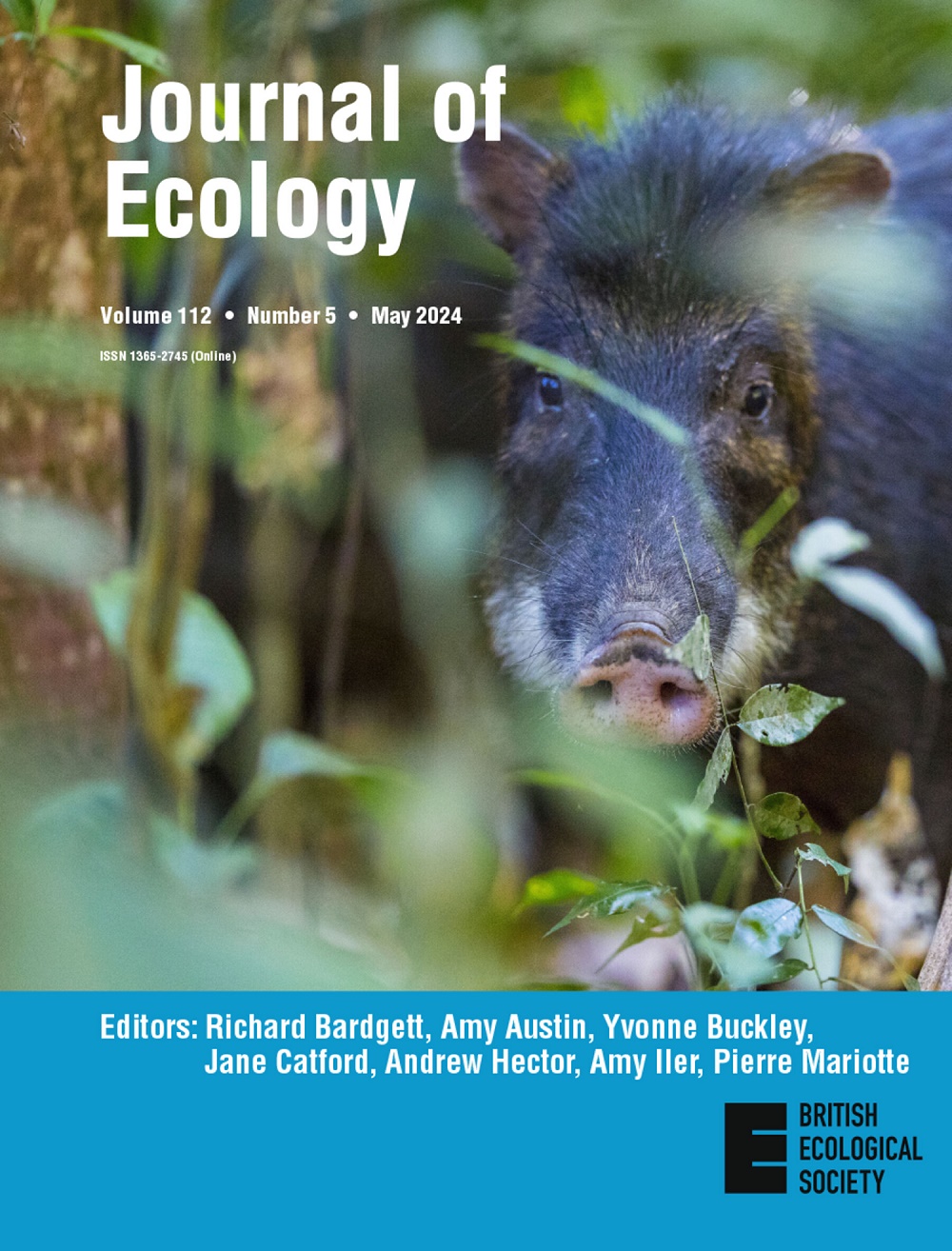Experimental warming drives local grassland plant species loss
IF 5.6
1区 环境科学与生态学
Q1 ECOLOGY
引用次数: 0
Abstract
实验变暖导致了当地草原植物物种的减少
气候变化对包括草原在内的许多生态系统构成了越来越大的威胁,由于草原容易受到人类活动相互威胁的影响,因此是当前保护的重点。预计在未来几十年,北美草原将经历更温暖的温度和更频繁、更严重的干旱,这对当地的生物多样性有潜在的影响。在美国明尼苏达州的雪松溪生态系统科学保护区,研究了6年多时间内增温和干旱处理对混合种植草地植物群落结构的影响。变暖持续降低了植物物种丰富度,其对香农多样性(另外考虑物种相对丰度)和优势度的影响随年份而变化。这些逐年变暖的相互作用可能是由环境条件的时间变异性和物种特异性反应驱动的。值得注意的是,豆科植物一直对气候变暖表现出积极的反应。干旱本身对物种丰富度和多样性的直接影响很小,但随着时间的推移,多样性响应的变异性降低,表明干旱条件下物种多样性更稳定。合成。本研究强调了气候变暖在减少草原生态系统物种丰富度、改变多样性和重塑功能群组成中的重要作用。虽然时间变异影响了变暖效应对多样性的影响程度,但豆科植物的积极响应突出了功能群动态在潜在缓冲物种损失方面的重要性。考虑年际变化的长期实验对于改善生态系统响应的预测和为旨在维持草原生物多样性和生态系统功能的适应性管理战略提供信息至关重要。
本文章由计算机程序翻译,如有差异,请以英文原文为准。
求助全文
约1分钟内获得全文
求助全文
来源期刊

Journal of Ecology
环境科学-生态学
CiteScore
10.90
自引率
5.50%
发文量
207
审稿时长
3.0 months
期刊介绍:
Journal of Ecology publishes original research papers on all aspects of the ecology of plants (including algae), in both aquatic and terrestrial ecosystems. We do not publish papers concerned solely with cultivated plants and agricultural ecosystems. Studies of plant communities, populations or individual species are accepted, as well as studies of the interactions between plants and animals, fungi or bacteria, providing they focus on the ecology of the plants.
We aim to bring important work using any ecological approach (including molecular techniques) to a wide international audience and therefore only publish papers with strong and ecological messages that advance our understanding of ecological principles.
 求助内容:
求助内容: 应助结果提醒方式:
应助结果提醒方式:


